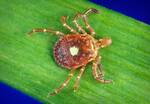Hospitals and laboratories use environmental control units to create sterile, controlled environments essential for patient care and research. These units...
The environmental benefits of scrap paper recycling in health care are undeniable, supporting critical efforts in waste reduction, resource conservation,...

How Weather Affects the Human Body
Weather exerts a broad spectrum of influences on physiological systems that keep us vibrant, well-functioning, and ever-adapting. From the skin, which shields us, to core temperature regulation, it is paramount to comprehend how these external factors play pivotal roles in the dance of resilience. Temperature variations and atmospheric shifts can also influence our comfort, affecting hydration, energy levels, and even our ability to focus and perform tasks effectively.The Body's Reaction to Temperature Shifts
Temperature variations have a direct—yet often underappreciated—impact on the delicate balance of our auditory system. As the mercury rises or falls, our bodies instinctively adjust, causing expansions and contractions within the ear structure that may impact how we perceive sound. These changes, while potentially bothersome, signify a remarkable biological resilience—a testament to the body's ability to navigate the dynamic symphony of nature's cues and maintain equilibrium in a shifting environment. (more…)The Types of Cancer That Are Linked to AFFF
EPA Orders Stop To Use of Dacthal in Herbicides Due to Health Concerns
NIEHS Examines Link Between Flouride in Water and IQ in Children
ADA 2024: Bisphenol in Canned Foods and Plastics May Play a Role in Type 2 Diabetes Risk
PFAS Exposure Linked to Increased Testicular Cancer in Firefighters and Military
We Breath Nanoparticles From Consumer Products, Especially Those Stored in Carpets
Solar Eclipse Raises Risk of Fatal Traffic Accidents
Rapid Rise in Legionnaires’ Disease Infections As Air Pollution Decreases
McGill University Analysis Finds Early Life Adversity May Predispose to Exaggerated Emotional Responses as Adults
Face-to-Face: Study Finds Peak Viral Transmission Occurs Within 5 Seconds
Mt. Sinai Study Finds PFAS Chemicals May Be Associated with Increased Risk of Thyroid Cancer
Low Income and Minority Children Risk Impaired Cognitive Function from Environmental Hazards
MedicalResearch.com Interview with:
Dr. Devon Payne-Sturges, DrPH, MPH, MEngr
Associate Professor
Maryland Institute for Applied Environmental Health
School of Public Health
University of Maryland, College Park
MedicalResearch.com: What is the background for this study?
Response: My co-authors and I conducted this study to fill a knowledge gap and to inform the work of Project TENDR. No systematic or scoping review had examined both exposure disparities and the joint effects of combined exposures of environmental neurotoxicants and social disadvantage as they relate to disparities in neurodevelopmental outcomes specifically among children living in the U.S.
Our study is the first to summarize the evidence on 7 neurotoxicants that children in the U.S. are routinely exposed to and we examined both disparities in these exposures and disparities in the effects of those exposures on children’s brain development, cognition, and behavior by race, ethnicity, and economic status.
We reviewed over 200 independent studies spanning five decades from 1974 to 2022 on social disparities in exposure to 7 exemplar neurotoxic chemicals and pollutants, including chemical mixtures, and their relationship with disparities with neurodevelopmental outcomes among children in the U.S.
Life-Threatening Meat Allergy Transmitted by Lone Star Tick
Study Raises Concerns About Potential for Deer to Serve as Reservoir for SARS-CoV-2

 Response: In 2021, USDA launched a pilot study to investigate exposure of wild white-tailed deer (Odocoileus virginianus) to SARS-CoV-2, a zoonotic virus and the virus that causes COVID-19. Researchers found that 40% of the blood samples tested had SARS-CoV-2 antibodies. This initial study suggested that SARS-CoV-2 could be transmitted from humans to deer, and that deer could potentially serve as a reservoir for the virus.
To better understand the transmission of SARS-CoV-2 in white-tailed deer, a team of researchers conducted a larger study to collect and analyze respiratory samples from free-ranging white-tailed deer in the United States. The study identified SARS-CoV-2 sequences in white-tailed deer across nearly half of the states in the U.S. The researchers also found that deer could be infected with multiple SARS-CoV-2 lineages, and that these lineages could be transmitted from deer to deer.
In addition, the researchers found three cases of potential virus transmission from white-tailed deer back to humans. This raises concerns about the potential for the virus to continue to evolve in an animal reservoir, and the possibility of future spillover events.
(more…)
Response: In 2021, USDA launched a pilot study to investigate exposure of wild white-tailed deer (Odocoileus virginianus) to SARS-CoV-2, a zoonotic virus and the virus that causes COVID-19. Researchers found that 40% of the blood samples tested had SARS-CoV-2 antibodies. This initial study suggested that SARS-CoV-2 could be transmitted from humans to deer, and that deer could potentially serve as a reservoir for the virus.
To better understand the transmission of SARS-CoV-2 in white-tailed deer, a team of researchers conducted a larger study to collect and analyze respiratory samples from free-ranging white-tailed deer in the United States. The study identified SARS-CoV-2 sequences in white-tailed deer across nearly half of the states in the U.S. The researchers also found that deer could be infected with multiple SARS-CoV-2 lineages, and that these lineages could be transmitted from deer to deer.
In addition, the researchers found three cases of potential virus transmission from white-tailed deer back to humans. This raises concerns about the potential for the virus to continue to evolve in an animal reservoir, and the possibility of future spillover events.
(more…)



























